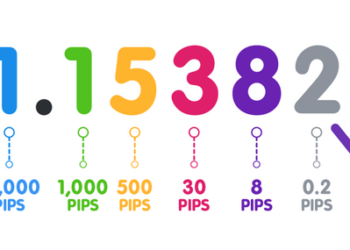The Pros and Cons of Leverage in Forex Trading: A short compact Guide
Certainly, here’s a comparison of the pros and cons of leverage trading:
Forex trading can be an exciting way to potentially earn money by trading currencies from around the world. One of the tools that makes forex trading interesting is “leverage.” Leverage can help traders make small investments go a long way. In this article, we’ll explore the Pros and Cons of Leverage in forex trading. I am using simple language to explain its advantage and disadvantage.
What is Leverage in Forex?
Imagine you want to trade currencies in the forex market. You have $100 to invest. With $100, you are not being able to buy much of a currency. But with leverage, it’s like borrowing extra money from your broker to make a bigger trade. For example, if you have 1:100 leverage, it means you can control a trade worth $10,000 with your $100. That’s the power of leverage in forex trading.
Pros of Using Leverage:

Amplified Profits: One of the biggest advantages of using leverage is the potential for amplified profits. With a smaller initial investment, you can control a much larger trade size. If the market moves in your favor, you can make a significant profit compared to your initial investment.
Access to More Markets: With leverage, you can access and trade a variety of currency pairs and markets that might have been out of reach for you with your limited capital. This diversification can help spread the risk.
Capital Efficiency: Leverage makes your capital more efficient. Instead of tying up a large sum of money in one trade, you can use that capital for multiple trades, increasing your chances of finding profitable opportunities.
Low-cost Entry: Leverage lets you enter the forex market with a smaller amount of money. This low-cost entry can be attractive to new traders who want to start trading without a huge initial investment.
Hedging Possibilities: Leverage can be used for hedging strategies. If you have a position that you want to protect against potential losses, leverage can help you create a hedging position without tying up too much capital.
Important Considerations:
While leverage has its advantages, it’s essential to understand that it’s a double-edged sword. Here are some important things to keep in mind:
Magnified Losses: Just as leverage can amplify profits, it can also magnify losses. If the market goes against your trade, you could end up losing more than your initial investment.
Risk Management: Using leverage wisely requires effective risk management. It’s crucial to set stop-loss orders to limit potential losses and avoid overextending your trades.
Emotional Control: The potential for big gains and losses can be emotionally challenging. Traders must maintain discipline and stick to their trading plans, regardless of leverage.
Understanding Your Broker: Different brokers offer various leverage options. Make sure you understand the terms and conditions of the leverage offered by your broker before you start trading.
Understanding the Benefits and Risks of leverage in Forex
Cons of Using Leverage:

Magnified Losses: The most significant drawback of leverage is that it can magnify your losses. While it boosts the potential for profits, it also means that if the market moves against you, you could lose a lot more money than you initially invested. This magnification of losses can be especially risky for traders who are not knowledgeable or do not use proper risk management.
Risk of Margin Calls: When you trade with leverage, you are essentially borrowing money from your broker. If your losses approach the amount of money you initially deposited, your broker may issue a margin call. This means you’ll need to deposit more funds to cover the losses or risk having your positions forcibly closed. Margin calls can be stressful and potentially lead to significant financial losses.
Emotional Stress: Trading with high leverage can be emotionally taxing. The fear of losing a substantial amount of money quickly can lead to impulsive decision-making and a lack of discipline. Emotional stress can negatively impact your trading decisions and overall performance.
Interest Costs: Some leveraged trades may come with interest costs, especially if you keep positions open overnight. These interest costs can eat into your profits, reducing your overall gains.
Limited Room for Error: With high leverage, there is very little room for error. Even small price movements can result in significant gains or losses. This means that traders must be highly vigilant and precise in their trading decisions.
If you’re new to trading and don’t know about Pros and Cons of Leverage, you can get into trouble. It’s important to acquire knowledge and gain experience before utilizing high leverage.
The Importance of Risk Management:
To mitigate the cons of leverage in forex trading, effective risk management is crucial. Here are some risk management strategies to consider:
Set Stop-Loss Orders: Determine in advance the maximum amount you are willing to lose on a trade and set stop-loss orders accordingly.
Diversify Your Portfolio: Avoid putting all your capital into a single trade. Diversifying your trading portfolio can help spread risk.
Use Leverage Wisely: Don’t use maximum leverage on every trade. Consider lower leverage ratios that align with your risk tolerance and trading strategy.
Stay Informed: Continuously educate yourself about the forex market and trading strategies to make informed decisions.
Conclusion:
In summary, leverage trading can offer opportunities for greater profits and market access, but it comes with substantial risks, including the potential for larger losses, margin calls, and emotional stress. It is crucial for traders to fully understand leverage and use it cautiously, with a well-thought-out risk management strategy.





